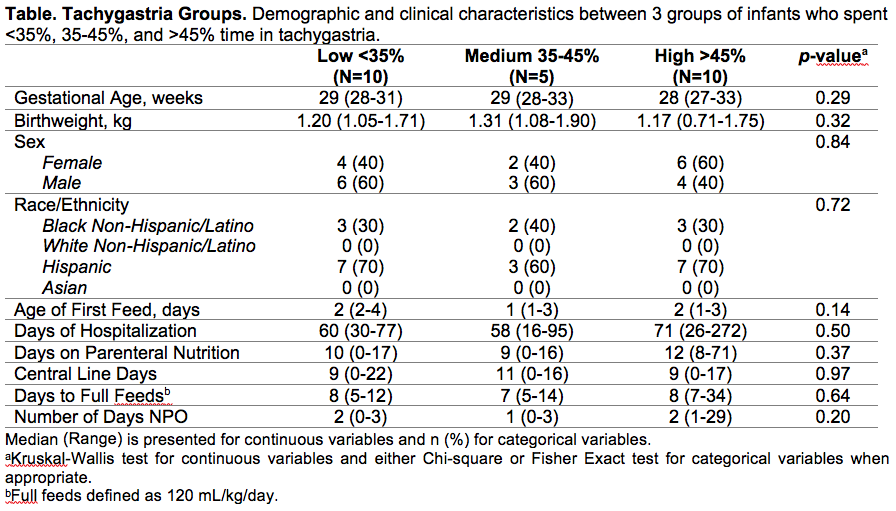Neonatal GI Physiology & NEC
Neonatal GI Physiology & NEC 2: Gut and Liver Health
349 - Intestinal Microbiota-Derived Metabolites Associated with Gastrointestinal Motility
Publication Number: 349.134

Eric B. Ortigoza, MD, MSCR
Assistant Professor of Pediatrics
University of Texas Southwestern Medical School
Dallas, Texas, United States
Presenting Author(s)
Background: Preterm infants with 35-45% tachygastria, a gastric dysrhythmia, achieve full feeds faster than infants with less or more tachygastria.
Objective: To measure differences in gut metabolites in infants with tachygastria < 35%, 35-45%, and >45% and to correlate these findings with gut motility.
Design/Methods:
We utilized tool samples from a longitudinal cohort of preterm infants who underwent weekly electrogastrography (EGG). One stool sample (from week 2) was selected from each infant born at 27-33 weeks’ gestation with birthweight < 1900g (N=25). Samples were excluded if EGG measurements were absent. Infants were stratified into low (< 35%), medium (35-45%) and high ( >45%) tachygastria groups based on EGG measurements. Non-targeted metabolomic profiling was performed utilizing ultrahigh performance liquid chromatography-tandem mass spectroscopy. Compounds were identified by automated comparison to reference chemical library entries. Metabolomics analysis was performed in MetaboAnalyst 5.0.
Results:
Eleven metabolites were differentially abundant between tachygastria groups. Medium vs. low: a decrease in oxo-carbofuran (p=0.001), asparaginyl-cysteine (p=0.01), and triacylglycerol (p=0.008) and increase in sulfonic acid (p=0.04), nan.2 (p=0.1), and adipoyl CoA (p=0.06) in the medium group compared to low. Medium vs. high: an increase in sulfonic acid and didehydroadipyl-CoA (p=0.075). High vs. Low group: a decrease in taurocholic acid (p=0.04), lactoyl ethanolamine phosphate (p=0.04) and (oxo-carboxy-n-propyl) cysteine (p=0.007) and an increase in C26:1 sphingomyelin (p=0.03). This work is at a discovery phase to identify metabolites associated with different degrees of GI motility.
Conclusion(s): Oxo-carbofuran, a metabolite associated with vomiting, abdominal pain, and diarrhea was decreased in medium vs. low group. This metabolite may modulate gut motility, since medium group infants achieve full feeds faster. Clinical significance of other metabolites requires further investigation.
